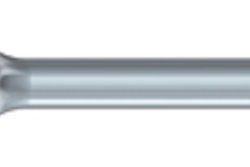Dear DrBicuspid Member,
If evidence of decay can't be seen on radiographic images, but you find it on clinical examination of a patient, especially a new patient, how do you document and justify clinical treatment? In their latest Legal Case, William S. Spiegel and Dr. Marc R. Leffler detail what happened to a general practitioner when a 23-year-old woman came into the office for a routine exam As they write, finding a way to document justification for clinical treatment is crucial. Read more here.
Also this week on DrBicuspid.com, studies indicate that dental students, even those who are taught alongside dental therapy students, show declining levels of support about caring for underserved populations as dental school progresses. Why does empathy decline during dental school, and what can be done to reverse the trend? Learn more here.
Since Medicare was created in 1965, the U.S. has put a man on the moon and a rover on Mars, the internet was created, and 3D-printed restorations went from science fiction to clinical practice. Some experts think it's time for Medicare to change, too, by finally covering dental care. Read more here.
What if you could prevent infectious biofilms on your patient's implants? Researchers have shown in the laboratory that sustained chlorhexidine release through a porous titanium-silica material prevented and eradicated biofilm formation. This research may lead to a new option for preventing implant infections. Learn more here.



















